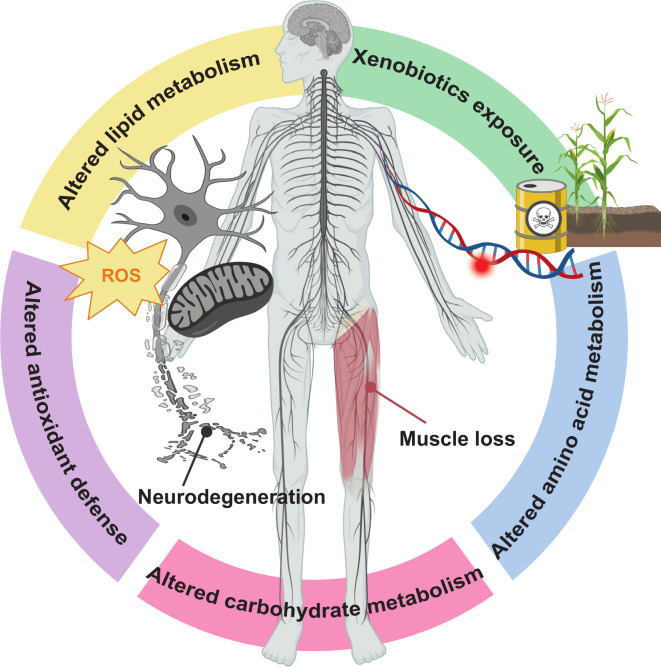Figure 6.
Overview of metabolomics-driven pathway discovery and validation in amyotrophic lateral sclerosis (ALS). Our metabolomics analysis identified emerging pathways, which could lead to novel avenues of investigation, for example, xenobiotics and diacylglycerols. Xenobiotic exposure, for example, chemical and benzoate metabolism sub-pathways, could interact with genetic risk to increase the chance of developing ALS. The diacylglycerol (DAG) sub-pathway, belonging to the lipid metabolism super-pathway, includes signalling lipid DAG molecules with diverse biological roles, such cytoskeletal, neuronal development, inflammation, immune cell signalling and apoptosis. Although these are all aspects of ALS pathology, the DAG contribution specifically to ALS pathogenesis is not known. We also identified previously known pathways, validating our approach, for example, energy dyshomoeostasis, through lipid and carbohydrate metabolism, altered antioxidant defense and amino acid metabolism. Dysregulated lipid and carbohydrate metabolism and loss of antioxidant defense against reactive oxygen species (ROS), for instance involving mitochondria, could lead to neurodegeneration. Altered amino acid metabolism, for instance through the creatine metabolism sub-pathway, may be a consequence of muscle loss.

